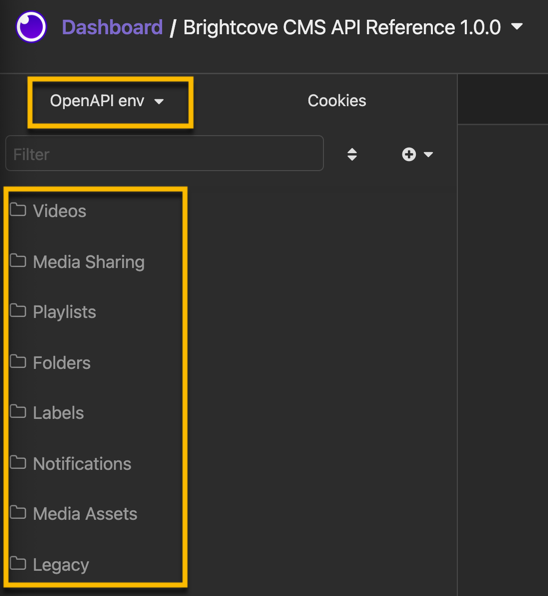

- Insomnia api select all how to#
- Insomnia api select all install#
- Insomnia api select all manual#
Live Preview: outputs what the tag populates.Click on the cog button to select either Static Value or Environment Variable. One of the most commonly used way of API documentation is by using Swagger. The information includes endpoints, request structure, response structure etc.
Insomnia api select all manual#
They are basically just a manual containing all the information required to work with the API.

Insomnia api select all how to#
Trigger Behavior: select the application behavior that populates the tag. API documentation are instructions about how to use and integrate with an API.Request: select the request to apply the configure onto.Attribute: select the value to perform the action on.

Function to Perform: select the function to perform or value to reference.Select options from the first four fields: Configure a TagĬlick on the tag in the URL bar to configure it. The Response tag can be used anywhere Environment Variables are supported. Import the Azure REST APIs with Insomnia.
Insomnia api select all install#
Open Insomnia Go to Application -> Preferences -> Plugins Type insomnia-plugin-default-headers and click Install Plugin Close Preferences dialog.
 Pulls specific header values out of a response. Insomnia has a feature request to add authentication header at the workspace or folder level, but until then this is the best option IMO. This can be useful if you download content in one request that needs to be uploaded in another. References the entire body contents of a request. In an empty URL bar or following a URL symbol such as / or, either press CTRL+Space to open the autocomplete dropdown or start. If youre using Insomnia, start by creating a new GET request (click the. This allows you to use a JSONPath filter of $.auth_token to reference the token itself in a subsequent request. All of the tools and apps mentioned in this tutorial are open source and free. use the ID from POST /items in PUT /items/. use a token from a login response as an Authorization header. The following are common use cases for chaining requests: Values are passed using Template Tags and Environment Variables. If you only need this for one request, anycodings_insomnia you can skip setting up the environment anycodings_insomnia variable for this and directly put the anycodings_insomnia function where you need it, same way as anycodings_insomnia described before.Insomnia allows chaining requests, or the ability to extract values from the responses of other requests. You can now access this variable anycodings_insomnia anywhere in your workspace for other anycodings_insomnia requests by pressing CTRL+SPACE in any anycodings_insomnia form field and selecting the variable anycodings_insomnia (purple x). Probably set trigger anycodings_insomnia behaviour to "When Expired" too. Select your login request and filter the anycodings_insomnia response json or xml for the value anycodings_insomnia containing your token value, f.e. This will open a "Tag" form, like this anycodings_insomnia one: Select one to your liking anycodings_insomnia from the dropdown, in your case anycodings_insomnia "Response => Body Attribute" should anycodings_insomnia work well. Put a response function (teal f) as anycodings_insomnia value of this variable by pressing anycodings_insomnia CTRL+SPACE. In your workspace press CTRL+E to open anycodings_insomnia "Manage Environments" windowĪdd a variable like "token" to the anycodings_insomnia environment
Pulls specific header values out of a response. Insomnia has a feature request to add authentication header at the workspace or folder level, but until then this is the best option IMO. This can be useful if you download content in one request that needs to be uploaded in another. References the entire body contents of a request. In an empty URL bar or following a URL symbol such as / or, either press CTRL+Space to open the autocomplete dropdown or start. If youre using Insomnia, start by creating a new GET request (click the. This allows you to use a JSONPath filter of $.auth_token to reference the token itself in a subsequent request. All of the tools and apps mentioned in this tutorial are open source and free. use the ID from POST /items in PUT /items/. use a token from a login response as an Authorization header. The following are common use cases for chaining requests: Values are passed using Template Tags and Environment Variables. If you only need this for one request, anycodings_insomnia you can skip setting up the environment anycodings_insomnia variable for this and directly put the anycodings_insomnia function where you need it, same way as anycodings_insomnia described before.Insomnia allows chaining requests, or the ability to extract values from the responses of other requests. You can now access this variable anycodings_insomnia anywhere in your workspace for other anycodings_insomnia requests by pressing CTRL+SPACE in any anycodings_insomnia form field and selecting the variable anycodings_insomnia (purple x). Probably set trigger anycodings_insomnia behaviour to "When Expired" too. Select your login request and filter the anycodings_insomnia response json or xml for the value anycodings_insomnia containing your token value, f.e. This will open a "Tag" form, like this anycodings_insomnia one: Select one to your liking anycodings_insomnia from the dropdown, in your case anycodings_insomnia "Response => Body Attribute" should anycodings_insomnia work well. Put a response function (teal f) as anycodings_insomnia value of this variable by pressing anycodings_insomnia CTRL+SPACE. In your workspace press CTRL+E to open anycodings_insomnia "Manage Environments" windowĪdd a variable like "token" to the anycodings_insomnia environment








 0 kommentar(er)
0 kommentar(er)
